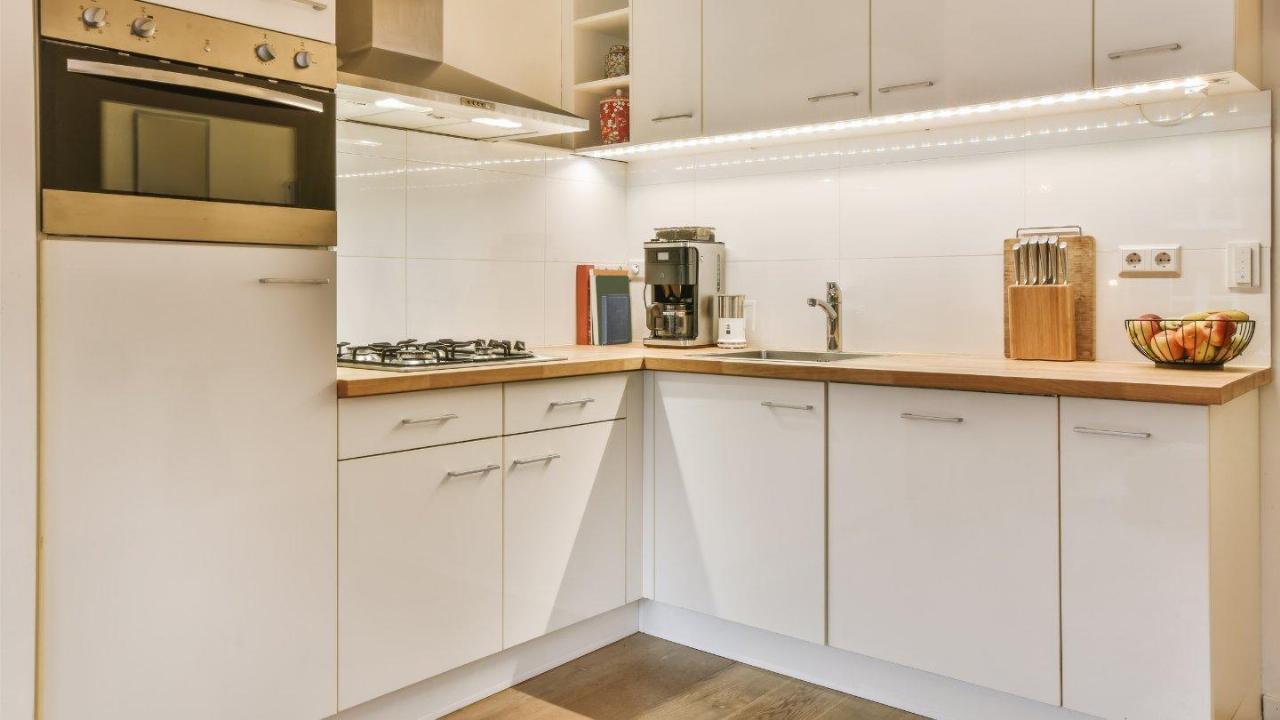Understanding the Kitchen Work Triangle
When redesigning your kitchen, especially in a compact space, understanding the fundamental principles of kitchen layout becomes essential. The kitchen work triangle concept, first developed in the 1940s, remains one of the most valuable tools for creating an efficient cooking space. As suggested by experts at macom.es and other home design resources, this principle optimizes the relationship between the three primary work centers: the sink, stove, and refrigerator.
Measuring distances between sink, stove, and refrigerator
The ideal work triangle maintains specific measurements to ensure efficiency without creating a cramped feeling. Each leg of the triangle should measure between 4 and 8 feet, with a total perimeter of 13-26 feet. This creates enough space to move comfortably while minimizing unnecessary steps. When properly implemented, this design can dramatically reduce movement during meal preparation—research from Lillian Moller Gilbreth in the 1920s demonstrated that an optimized L-shaped kitchen could reduce steps from 281 to just 45 during cooking activities.
Adapting the triangle concept for compact kitchens
In smaller kitchens, adapting the work triangle requires creativity. While you might not achieve the ideal measurements, the principle remains valuable. Consider a modified triangle that maintains the relationship between work centers even if distances are slightly compressed. Ensure that no major obstacles interrupt the flow between these points, as unobstructed pathways are crucial for kitchen efficiency. Primary walkways should maintain at least 91cm of clearance, with work aisles requiring a minimum of 107cm for comfortable movement.
Maximizing Vertical Storage Space
Small kitchens demand innovative storage solutions that take advantage of often-overlooked vertical space. By thinking upward rather than outward, you can dramatically increase your storage capacity without expanding your kitchen’s footprint.
Wall-mounted organizational systems and shelving
Wall-mounted storage offers exceptional versatility for small kitchens. Open shelving provides easy access to frequently used items while creating visual openness. Magnetic knife strips, wall-mounted spice racks, and hanging pot systems turn wall space into functional storage. When planning vertical storage, remember that the ideal reaching height is just above eye level—avoid storing heavy items too high, which could create safety hazards and strain. For maximum accessibility, upper cabinets should be positioned at or slightly below eye level.
Cabinet modifications to increase accessibility
Transforming existing cabinets can significantly improve storage efficiency. Pull-out shelves and sliding drawers provide full access to cabinet interiors, eliminating the need to reach into dark corners. Cabinet organizers like vertical dividers for baking sheets and adjustable risers for canned goods maximize every inch of space. Deep drawers with customizable dividers offer more practical storage than traditional cabinets with doors, especially for pots, pans, and small appliances.
Creating Efficient Workflow Zones
Beyond the work triangle, modern kitchen design embraces a more detailed approach through workflow zones. This concept divides kitchen activities into distinct areas that streamline cooking processes and make even the smallest kitchens more functional.

Establishing prep, cooking, and cleaning stations
Ergonomic kitchen design recommends dividing your kitchen into five essential zones: consumables, non-consumables, cleaning, preparation, and cooking. Each zone should contain all necessary tools and supplies for its designated function. The preparation zone needs adequate counter space, cutting boards, and knife storage. The cooking zone requires easy access to utensils, spices, and oven mitts. The cleaning zone benefits from thoughtful organization of detergents, scrubbers, and waste disposal solutions. Each zone should be equipped with appropriate task lighting to reduce eye strain and improve safety.
Overlapping functionalities in limited square footage
In compact kitchens, zones often overlap physically while maintaining distinct functional identities. A countertop might serve as both prep space and a coffee station at different times of day. Islands or peninsula counters can function as prep areas, serving stations, and dining spaces. The key is ensuring that each zone maintains its essential tools while allowing for flexible use of limited space. Multi-purpose furniture pieces like rolling carts can transition between zones as needed, providing additional work surfaces exactly where required.
Space-Saving Appliance Solutions
Appliances typically consume significant kitchen space, but technological innovations offer numerous space-efficient alternatives without sacrificing functionality.
Compact and multi-functional appliance options
The market now offers a wide range of slimline and combination appliances designed specifically for smaller kitchens. Combination microwave-convection ovens eliminate the need for separate appliances. Refrigerator-freezer combos with bottom freezers optimize cold storage in minimal space. Dishwasher drawers provide the convenience of a full-sized dishwasher in half the space. When selecting appliances, prioritize multi-functionality over specialized gadgets that serve limited purposes. Energy efficiency is another important consideration, as many compact appliances also offer reduced energy consumption, providing both space and utility savings.
Strategic placement for improved kitchen traffic
Appliance placement significantly impacts kitchen flow and ergonomics. Installing dishwashers within 91cm of the sink reduces water drips and improves cleaning efficiency. Refrigerators should be accessible from both the cooking area and the entrance to facilitate food retrieval during preparation and snacking. For optimal ergonomics, cooktops should be positioned at 90-95cm height, built-in ovens between 70-120cm, and microwaves between 120-150cm. Raising dishwashers slightly above floor level reduces back strain during loading and unloading.
Ergonomic Considerations for Daily Comfort
True kitchen ergonomics goes beyond efficient layouts to address the physical comfort of everyone using the space, preventing strain and making cooking more enjoyable.
Counter height and work surface customization
Standard countertop heights of 900mm work well for people between 165cm and 178cm tall, but customization improves comfort for users of different heights. The optimal worktop height allows forearms to rest at a 45-degree angle when elbows are bent, significantly reducing back strain during prolonged food preparation. For multi-user households, consider incorporating work surfaces at different heights or investing in adjustable solutions that can vary between 71 and 91cm. Cooking surfaces should ideally sit 10-15cm lower than standard worktops to accommodate the height of pots and pans.
Reducing strain through thoughtful layout design
Beyond heights, other design elements contribute significantly to ergonomic comfort. Soft-close drawers and doors reduce impact stress and noise. Slip-resistant flooring materials like luxury vinyl or unglazed tiles improve safety and comfort during extended cooking sessions. Proper task lighting reduces eye strain and prevents accidents. Consider the reach zones when organizing storage—items used daily should require minimal stretching or bending. With nearly 30% of people over 65 experiencing falls at home, these ergonomic considerations become increasingly important for creating kitchens that remain comfortable and safe throughout all stages of life.








